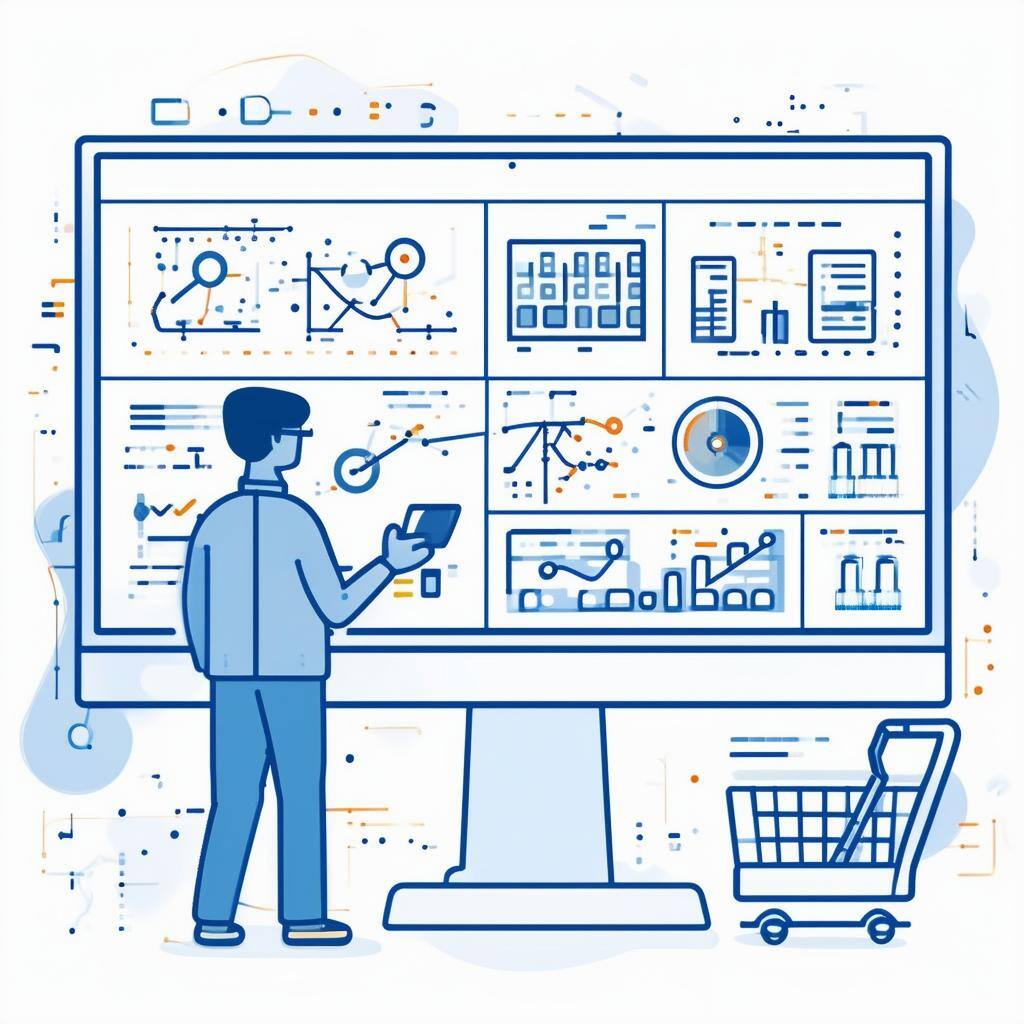How Data Science Is Applied in the Retail Industry
In retail, understanding the diverse mindset of millions of customers is a formidable challenge. Retailers are now embracing data science to decipher customer behavior, capture emerging trends, and make well-informed decisions. By leveraging advanced analytics, companies can design strategies that directly influence customer actions and optimize every facet of their operations.
Below are 11 practical use cases that illustrate how data science can transform retail—each tailored to the solutions offered by Ermin Systems.
1. Merchandising Optimization
Merchandising involves a broad range of activities designed to promote and sell products. With data science, retailers can analyze customer preferences, seasonal trends, and visual appeal to fine-tune product displays.
- Visual Impact: Data-driven insights help retailers determine the most effective ways to refresh product assortments and design appealing packaging.
- Trend Prioritization: By evaluating relevance, seasonality, and market trends, merchandising strategies can be dynamically adjusted to maximize customer engagement.
2. Harnessing Social Media Data
Social media remains a central communication channel for consumers, and it generates vast amounts of data. Retailers can analyze social media activity to understand customer behavior and market sentiment.
- Behavioral Insights: By mining social media data, businesses can detect emerging patterns and craft tailored marketing campaigns.
- Real-Time Data Collection: Custom code and regular updates ensure that social media analytics remain current, enabling continuous refinement of advertising strategies.
3. Integrating Augmented Reality (AR)
Augmented Reality transforms the shopping experience by allowing customers to “try before they buy.”
- Enhanced Product Visualization: AR applications enable users to view products in real-time within their own environment, creating a more interactive experience.
- Digital Storefronts: Retailers can build virtual shopping experiences that engage customers on a whole new level, supported by data-driven insights into customer preferences.
4. Upselling and Cross-Selling
Using data science, retailers can identify the perfect moments to suggest additional products to customers.
- Personalized Offers: Predictive analytics enable the creation of targeted recommendations based on previous purchase behavior.
- Revenue Growth: Even modest upselling or cross-selling initiatives can lead to significant profit increases by leveraging customer data to drive conversions.
5. Customer Sentiment Analysis
Understanding customer sentiment is crucial for refining marketing strategies and product offerings.
- Natural Language Processing (NLP): By applying NLP techniques to customer reviews, social media posts, and feedback, retailers can gauge whether sentiments are positive, negative, or neutral.
- Actionable Insights: This analysis helps in adjusting messaging and strategies to better align with customer expectations and improve satisfaction.
6. Recommendation Engines
Recommendation engines play a pivotal role in enhancing the shopping experience by providing personalized product suggestions.
- Collaborative Filtering: Analyzes customer behavior across similar user groups to predict product preferences.
- Content-Based Filtering: Focuses on product attributes to suggest items with similar features, ensuring that customers receive recommendations that resonate with their tastes.
7. Customer Lifetime Value Modeling
It’s essential to identify and nurture your most profitable customers.
- Behavioral Forecasting: Data science helps predict changes in purchasing behavior, ensuring timely interventions to retain valuable customers.
- Cost Attribution and Retention: By analyzing acquisition costs versus lifetime value, retailers can optimize marketing spend and develop targeted retention strategies.
8. Price Optimization
Setting the optimal price can make a significant impact on both customer satisfaction and profit margins.
- Dynamic Pricing: Data-driven models consider production costs, competitor pricing, and market demand to adjust prices in real time.
- Feedback Integration: Algorithms incorporate customer feedback to refine pricing strategies, ensuring a balance between profitability and customer appeal.
9. Fraud Detection
Fraud not only affects revenue but also erodes customer trust.
- Real-Time Monitoring: Advanced algorithms continuously scan for unusual patterns that may indicate fraudulent activities.
- Risk Mitigation: Deep learning techniques help in quickly identifying and flagging suspicious transactions, protecting both retailers and consumers.
10. Inventory Management
Efficient inventory management is crucial for meeting customer demand while minimizing costs.
- Predictive Analytics: Machine learning models forecast demand patterns to ensure that the right products are available at the right time.
- Supply Chain Optimization: Data science tools can identify inefficiencies in the supply chain, allowing for timely adjustments and better inventory control.
11. Selecting New Store Locations
Choosing the right location for a new store involves analyzing a multitude of data points, from demographic trends to competitive landscapes.
- Data-Driven Site Selection: Retailers can leverage data to determine the most promising areas for expansion, ensuring that new stores are optimally positioned for success.
- Market Analysis: By evaluating customer distribution and nearby competitors, data science supports informed decision-making for store placement.
Real-World Success Stories
Amazon
Amazon is a global leader in online retail, utilizing data science to manage inventory and deliver personalized recommendations. Their ability to forecast demand and adjust operations on the fly is a benchmark for data-driven retail strategies.
Target Corporation
Target leverages detailed customer data—including demographics and purchase history—to create personalized shopping experiences. This targeted approach has been central to its success, driving customer loyalty and repeat business.
Starbucks
Starbucks uses data science to select optimal locations for new stores by analyzing traffic patterns, area demographics, and customer behavior. This strategic use of data ensures that each new location is poised for success.
Netflix
Although primarily a streaming service, Netflix’s recommendation engine is a prime example of effective data science. By analyzing user behavior and preferences, Netflix offers personalized content suggestions—a technique that has clear parallels in retail.
Conclusion
The retail industry is evolving rapidly, and data science is at the heart of this transformation. By leveraging data to understand customer behavior, optimize pricing, streamline inventory, and more, retailers can not only stay competitive but also drive significant growth. At Ermin Systems, we are committed to providing the tools and expertise necessary to harness these opportunities. Our data-driven solutions empower retailers to meet customer needs more effectively, ensuring long-term success in an ever-changing market.
For additional insights on how Ermin Systems can help transform your retail strategy through data science, please get in touch with our expert team.




